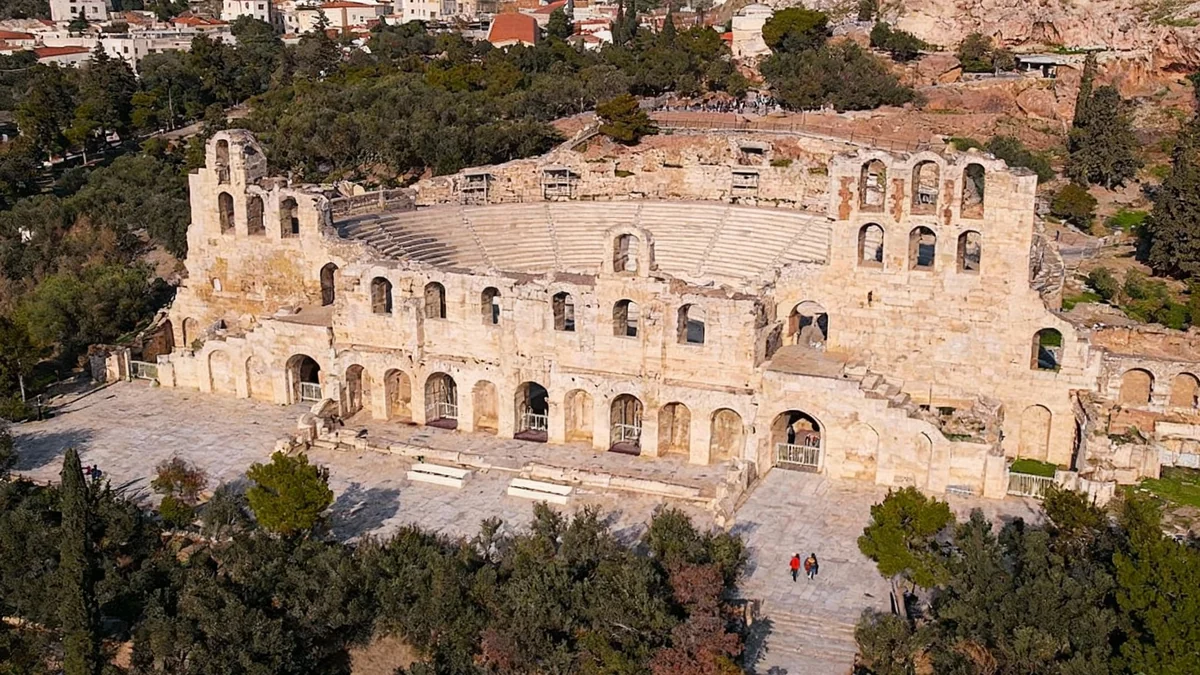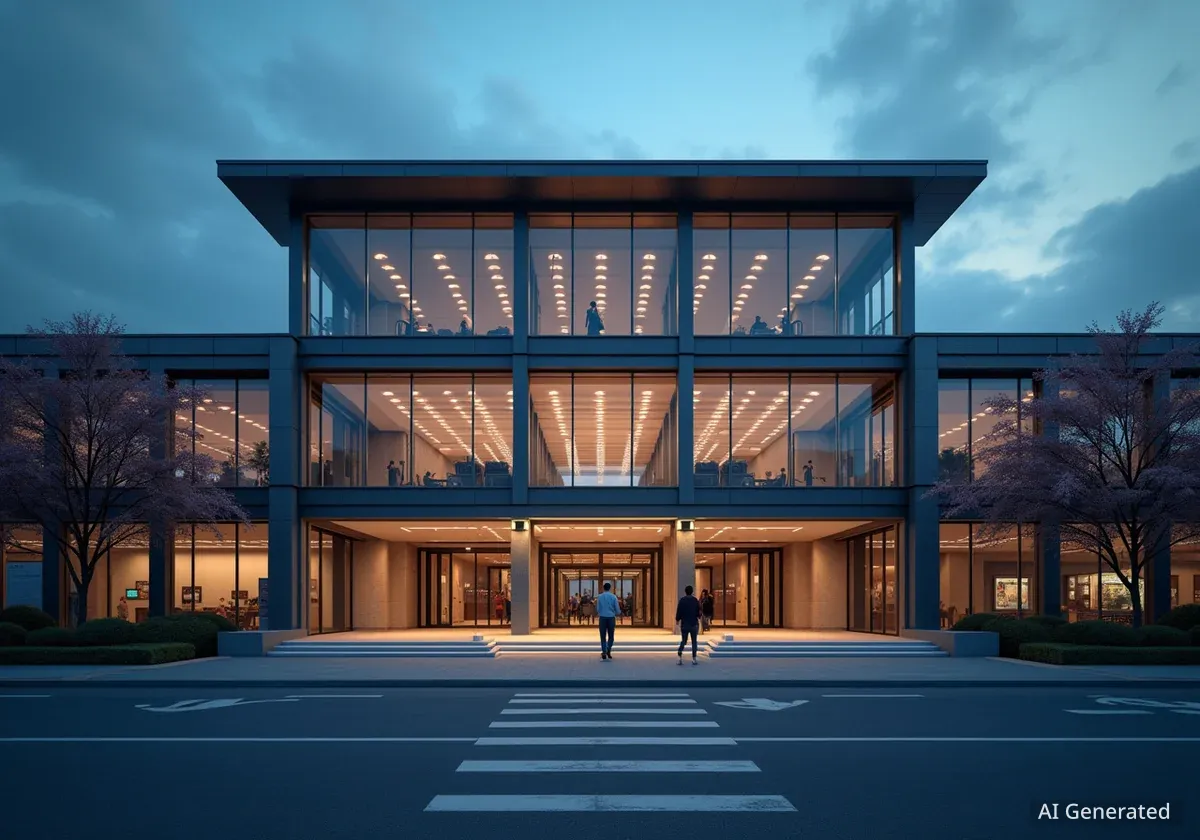The ancient Odeon of Herodes Atticus, a historic marble theater at the base of the Acropolis in Athens, Greece, has closed its doors for extensive restoration. The final performance of its season took place on October 16, 2025. This closure marks the first long-term pause for the venue in decades, with work expected to last at least three years.
Key Takeaways
- The Odeon of Herodes Atticus closed on October 16, 2025, for major restoration.
- The project is expected to take a minimum of three years.
- This is the first long-term closure of the site in many decades.
- The Athens Epidaurus Festival will need to relocate performances.
- Restoration focuses on structural integrity, drainage, and material preservation.
Historic Site Undergoes Critical Repairs
Greek Minister of Culture, Lina Mendoni, confirmed the closure. She stated that the reopening date depends on the results of ongoing structural studies. However, she emphasized that the restoration will require no less than three years to complete. This significant undertaking aims to preserve one of Greece's most important cultural monuments for future generations.
The decision to close the Odeon comes after years of monitoring by experts. These studies revealed serious wear and tear on the ancient structure. The theater, a cornerstone of Athens' cultural scene, has hosted countless performances over the decades, leading to natural deterioration.
Fast Fact
The Odeon of Herodes Atticus was originally built in 161 AD by Herodes Atticus, a wealthy Roman senator. It was dedicated to his late wife, Aspasia Annia Regilla.
Impact on Athens Epidaurus Festival
The Odeon serves as the primary venue for the Athens Epidaurus Festival. This event is Greece’s leading celebration of music, theater, and dance. The festival typically runs from May through October each year. Its artistic director, Katerina Evangelatos, highlighted the Odeon's central role.
"When people think of Athens’ cultural life, they think of the festival — and of the Odeon of Herodes Atticus," said Katerina Evangelatos in an interview with the Associated Press.
The closure means the festival will need to find alternative locations for its key performances during the restoration period. This presents a significant logistical challenge for both organizers and artists. Audiences, who have grown accustomed to experiencing culture in this unique setting, will also feel the impact.
Background on the Festival
The Athens Epidaurus Festival is one of Europe's oldest and most prestigious performing arts festivals. It attracts international artists and draws thousands of visitors to Athens and Epidaurus annually, showcasing ancient drama, contemporary theater, music, and dance.
Addressing Years of Deterioration
Archaeologist Eleni Kountouri oversees the restoration project. She identified various forms of deterioration affecting the Odeon. These include biological growth in crevices where water collects, and plant roots spreading through joints. Deep fissures within the marble and cracks caused by temperature changes also pose threats to the structure's integrity.
Past repairs, some dating back to the 1950s, have also begun to fail. This situation prompted the need for a comprehensive conservation plan. The new project will reinforce the ancient stonework, improve drainage systems, and ensure the monument's long-term preservation.
- Biological Growth: Water accumulation in crevices encourages moss and other plant life.
- Plant Root Infiltration: Roots can expand and damage stone joints.
- Deep Fissures: Cracks in the marble indicate structural stress.
- Temperature Fluctuations: Repeated expansion and contraction cause material fatigue.
The restoration will use modern techniques while carefully maintaining the monument’s authenticity. The goal is to preserve its distinctive beauty and historical character.
A Monument with a Rich History
The Odeon was built in 161 AD by Herodes Atticus, a prominent Roman senator. It was designed as a steep-sloped theater with a three-story stone façade. Its roof was crafted from cedar of Lebanon, a prized material. The venue could accommodate up to 5,000 spectators.
The structure faced destruction in 267 AD during an invasion by the Heruli. It remained in ruins for centuries. A major reconstruction effort in the 1950s restored its orchestra and audience tiers. This work used Pentelic marble, the same stone found in the Parthenon.
Since its reconstruction, the Odeon has become Athens’ most prestigious cultural venue. It serves as a place where ancient history meets modern artistic expression. The site stands as a testament to both its original Roman builders and the mid-20th century restorers.
A Stage for Global Legends
Over the decades, the Odeon has hosted an impressive list of world-renowned performers. These include opera legends Maria Callas and Luciano Pavarotti. American icons like Frank Sinatra also graced its stage. More recently, artists such as Elton John and Coldplay have performed there.
Greek composers, including Mikis Theodorakis and Manos Hatzidakis, made history with their performances at the Odeon. Legendary Greek singer Marinella also delivered one of its most memorable and emotional concerts in recent memory. These events have created a deep connection between the venue and its audiences.
The temporary closure of this beloved marble amphitheater evokes a sense of personal loss for many Athenians. Generations of families have gathered there to experience art and culture. The restoration represents more than a technical pause; it is a moment for Athens to reflect on its enduring ancient heritage and its vibrant modern cultural identity.





